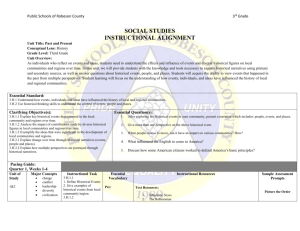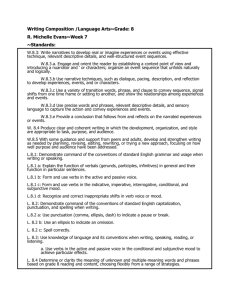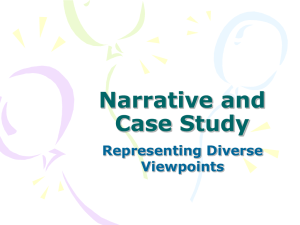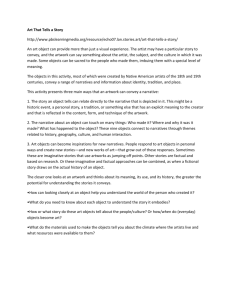Memo - Westmont College
advertisement
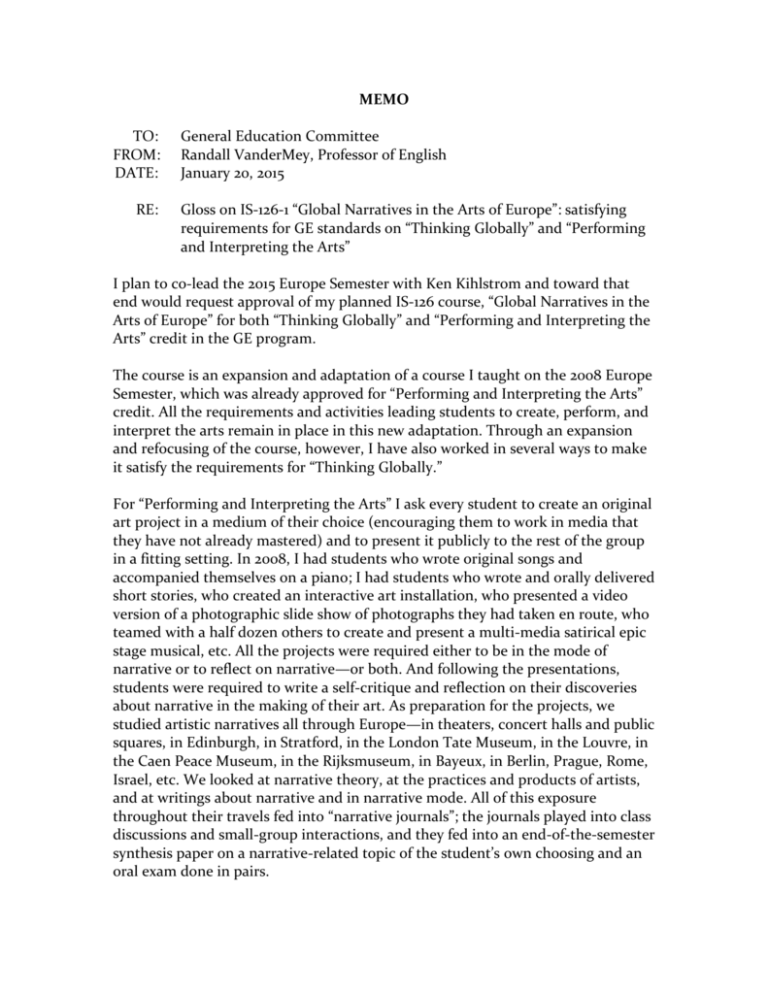
MEMO TO: FROM: DATE: RE: General Education Committee Randall VanderMey, Professor of English January 20, 2015 Gloss on IS-126-1 “Global Narratives in the Arts of Europe”: satisfying requirements for GE standards on “Thinking Globally” and “Performing and Interpreting the Arts” I plan to co-lead the 2015 Europe Semester with Ken Kihlstrom and toward that end would request approval of my planned IS-126 course, “Global Narratives in the Arts of Europe” for both “Thinking Globally” and “Performing and Interpreting the Arts” credit in the GE program. The course is an expansion and adaptation of a course I taught on the 2008 Europe Semester, which was already approved for “Performing and Interpreting the Arts” credit. All the requirements and activities leading students to create, perform, and interpret the arts remain in place in this new adaptation. Through an expansion and refocusing of the course, however, I have also worked in several ways to make it satisfy the requirements for “Thinking Globally.” For “Performing and Interpreting the Arts” I ask every student to create an original art project in a medium of their choice (encouraging them to work in media that they have not already mastered) and to present it publicly to the rest of the group in a fitting setting. In 2008, I had students who wrote original songs and accompanied themselves on a piano; I had students who wrote and orally delivered short stories, who created an interactive art installation, who presented a video version of a photographic slide show of photographs they had taken en route, who teamed with a half dozen others to create and present a multi-media satirical epic stage musical, etc. All the projects were required either to be in the mode of narrative or to reflect on narrative—or both. And following the presentations, students were required to write a self-critique and reflection on their discoveries about narrative in the making of their art. As preparation for the projects, we studied artistic narratives all through Europe—in theaters, concert halls and public squares, in Edinburgh, in Stratford, in the London Tate Museum, in the Louvre, in the Caen Peace Museum, in the Rijksmuseum, in Bayeux, in Berlin, Prague, Rome, Israel, etc. We looked at narrative theory, at the practices and products of artists, and at writings about narrative and in narrative mode. All of this exposure throughout their travels fed into “narrative journals”; the journals played into class discussions and small-group interactions, and they fed into an end-of-the-semester synthesis paper on a narrative-related topic of the student’s own choosing and an oral exam done in pairs. VanderMey—Memo to GE Committee 2 I plan to repeat this pattern of arts pedagogy but this time with a more specific focus on “global narratives.” I explain in the accompanying syllabus what I mean by global narratives: 1) stories that have come to have universal popularity and influence, such as the Italian poet Dante’s Divine Comedy or the ancient poet Ovid’s tellings of Roman myths in Metamorphoses, as well as stories in the Bible; 2) stories that emerge from globally significant conflicts, such as Simon McBurney’s play Copenhagen, that emerges from the German and Danish scientific research that led to the development of the atom bomb in WWII; 3) stories that represent one cultural perspective on events that would be interpreted quite differently from an opposing cultural perspective, such as the Norman (French) depiction of the Norman Conquest in 1066, on the Bayeux Tapestry, or Primo Levi’s memoir of Jewish life in Europe during a century of war. To qualify for “Thinking Globally” credit, I will be asking students 1) to encounter narrative in art throughout the 11 countries we will be visiting, looking specifically for art that reflects global influences or migrations or cultural strains. E.g., I’ll point students to art displayed in galleries that reflects colonial expansion or the exoticizing of the other. 2) I will assign a hefty load of reading, play-going, and movie-watching focused on a carefully chosen list of works that match places in our travels and reflect global events and cultural flows. E.g., I will ask them to watch and respond to Werner Herzog’s Fitzcarraldo, a German-directed film about a maniacal, Sisyphusian visionary who strives to build an Italian opera house deep in the Brazilian jungle. I’ll have them read and enact scenes from the play A Disappearing Number, which deals with a precocious young Indian mathematician who is championed by a Cambridge don, and the play Way to Heaven, a Spanish playwright’s (Juan Mayorga’s) handling of the WWII atrocities at Teresienstadt, the Nazi-run concentration camp in the now-Czech Republic. And I’ll have them read the Elif Shafak novel, The Bastard of Istanbul, which shows an Arizona woman’s entrance by marriage, divorce, and family networking into the historical realities of the Armenian genocide at the hands of the Turks. 3) Besides asking students to read, view, interact with, and write about a rich smorgasbord of “global narratives,” I plan to work throughout the semester to stretch students’ consciousness of what they are absorbing to include a more global awareness. For example, I will ask them to respond to settings and characters—possibly minor ones in the narratives—that hint at global contexts for the actions described: intercontinental trading practices, colonialization, patterns of subjugation and exclusion, VanderMey—Memo to GE Committee 3 hybridization, cultural cross-fertilization, etc. I will ask students to reflect in their writing and conversations and performances on historical contexts relative to the art works they encounter, so that they will incorporate such effects as blind spots, objectifications, hegemonies, patriarchal patterns, and power differentials into their interpretations of works of art. The third practice I’ve just listed is potentially the most important way of teaching students to think globally, because it will provide them ways to respond with global awareness not only to works displaying patently cross-cultural and international influences but also to works that otherwise would comfortably represent to them the values and codes of meaning in their Western “home” culture. I’m genuinely excited to teach this course. I’m learning a great deal myself as I put it together and, I think and I trust, capturing in it the spirit of the college’s GE standards for both “Thinking Globally” and “Performing and Interpreting the Arts.” I see it as a course that could be taught successfully on campus as well, without all the excitement of travel. I submit the plan for IS-126-1, Global Narratives in the Arts of Europe, to the GE Committee for their approval of the course as meeting the two standards.




